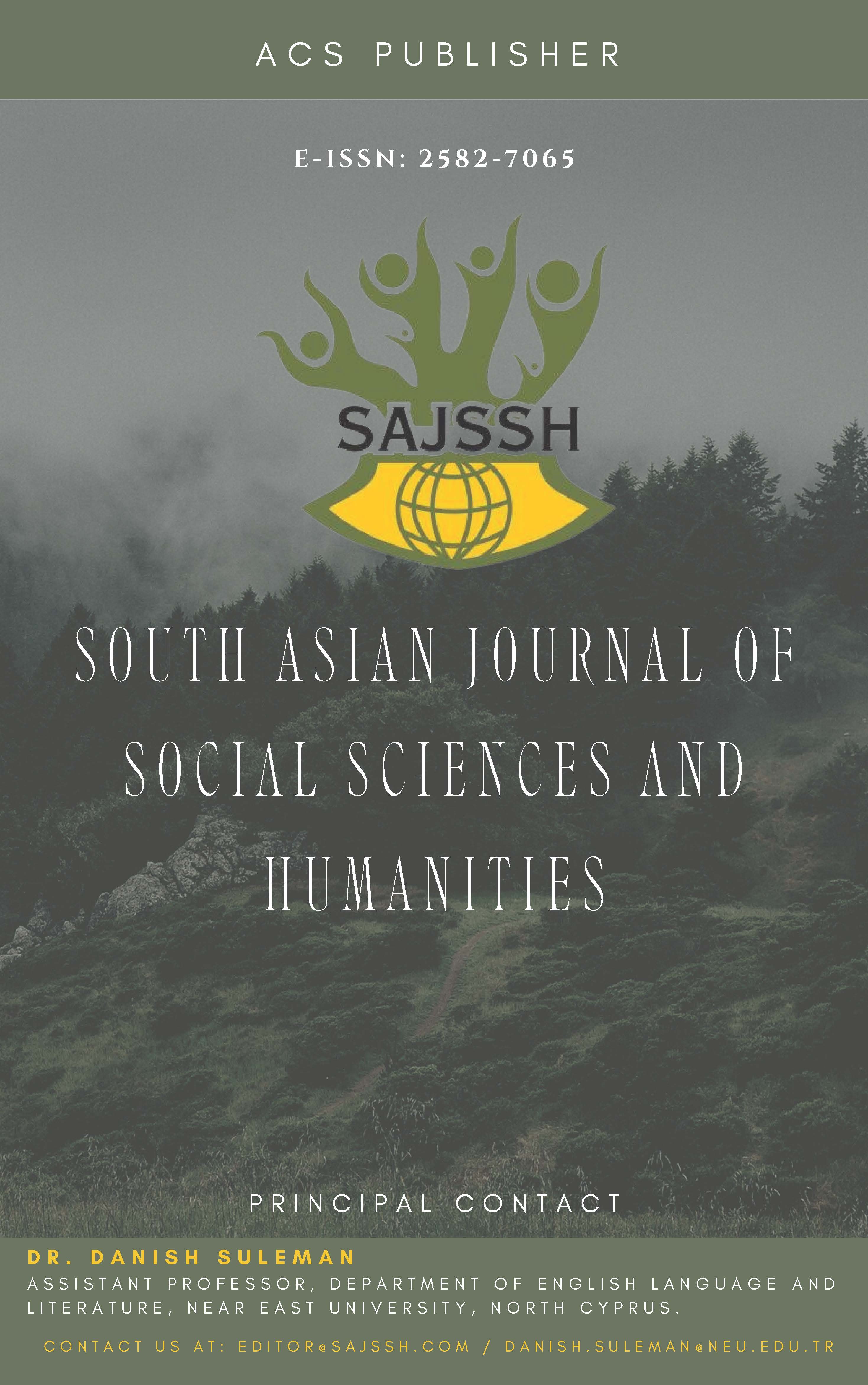Assessing the Validity and Reliability of the Adapted Staff Stressors Scale in Chinese Universities
DOI:
https://doi.org/10.48165/sajssh.2024.6212Keywords:
Reliability, validity, staff stressors scale, private HEIs, staff stressAbstract
The purpose of this study was to develop and validate a stressors scale with reflective and formative indicators for teaching staff in Ningxia, China. The scale was analyzed through a questionnaire survey of 237 staff members using exploratory factor analysis (EFA) and validation factor analysis (CFA). The results showed that the scale had good structural validity and internal consistency, and the exploratory factor analysis extracted six dimensions explaining 66.908% of the variance. The Cronbach's alpha coefficient and the combined credibility were within the acceptable range. Further validation factor analysis showed that validity assessments (including convergent and discriminant validity) confirmed the robustness of the scale. For formative indicators metrics such as Variance Inflation Factor (VIF) were used to check for covariance between indicators to avoid redundancy. In addition, the importance and weights of the indicators were analyzed to confirm their relative importance in defining the structure. In summary, the Staff Stressors Scale can be used to measure faculty stress in private institutions in the Ningxia region of China, and it can also provide a basis for further research in the future.
References
Almanasreh, E., Moles, R., & Chen, T. F. (2019). Evaluation of methods used for estimating content validity. Research in Social and Administrative Pharmacy, 15(2), 214–221. https://doi.org/10.1016/j.sapharm.2018.03.066
Barouch Gilbert, R., Adesope, O. O., & Schroeder, N. L. (2013). Efficacy beliefs, job satisfaction, stress and their influence on the occupational commitment of English-medium content teachers in the Dominican Republic. Educational Psychology, 34(7), 876–899. https://doi.org/10.1080/01443410.2013.814193
Ehido, A., Awang, Z., Abdul Halim, B., & Ibeabuchi, C. (2020). Establishing Valid and Reliable Measures for Organizational Commitment and Job Performance: An Exploratory Factor Analysis. International Journal of Social Sciences Perspectives, 7(2), 58–70. https://doi.org/10.33094/7.2017.2020.72.58.70
Embse, N., Ryan, S. V., Gibbs, T., & Mankin, A. (2019). Teacher stress interventions: A systematic review. Psychology in the Schools, 56(8). https://doi.org/10.1002/pits.22279
Hair, J. F., Matthews, L. M., Matthews, R. L., & Sarstedt, M. (2017). PLS-SEM or CB-SEM: updated guidelines on which method to use. International Journal of Multivariate Data Analysis, 1(2), 107. https://doi.org/10.1504/ijmda.2017.087624
Hair, J.F., Hult, G. T. M., Ringle, C. M., Sarstedt, M., Danks, N. P., & Ray, S. (2021). Partial least squares structural equation modeling (PLS-SEM) using R: A workbook (p. 197). Springer Nature.
Hajjar, S. T. (2018). Statistical analysis: Internal-consistency reliability and construct validity. International Journal of Quantitative and Qualitative Research Methods, 6(1), 27– 38.
Harmsen, R., Helms-Lorenz, M., Maulana, R., & van Veen, K. (2018). The relationship between beginning teachers’ stress causes, stress responses, teaching behaviour and attrition. Teachers and Teaching, 24(6), 626–643.
Henseler, J., Ringle, C. M., & Sarstedt, M. (2015). A new criterion for assessing discriminant validity in variance-based structural equation modeling. Journal of the Academy of Marketing Science, 43(1), 115–135. https://doi.org/10.1007/s11747-014-0403-8
Leung, T., Siu, O., & Spector, P. E. (2000). Faculty stressors, job satisfaction, and psychological distress among university teachers in Hong Kong: The role of locus of control. International Journal of Stress Management, 7(2), 121 – 138. https://doi.org/10.1023/a:1009584202196
Li, W., & Kou, C. (2018). Prevalence and correlates of psychological stress among teachers at a national key comprehensive university in China. International Journal of Occupational and Environmental Health, 24(1-2), 7 – 16. https://doi.org/10.1080/10773525.2018.1500803
McCarthy, C. J., Lambert, R. G., Lineback, S., Fitchett, P., & Baddouh, P. G. (2015). Assessing Teacher Appraisals and Stress in the Classroom: Review of the Classroom Appraisal of Resources and Demands. Educational Psychology Review, 28(3), 577– 603. https://doi.org/10.1007/s10648-015-9322-6
Muda, H., Baba, Z. S., Awang, Z., Badrul, N. S., Loganathan, N., & Ali, M. H. (2020). Expert review and pretesting of behavioral supervision in higher education. Journal of Applied Research in Higher Education, 12(4), 767 – 785. https://doi.org/10.1108/jarhe-02-2019-0029
Prilleltensky, I., Neff, M., & Bessell, A. (2016). Teacher Stress: What It Is, Why It’s Important, How It Can be Alleviated. Theory into Practice, 55(2), 104–111. https://doi.org/10.1080/00405841.2016.1148986
Ramayah, T. J. F. H., Cheah, J., Chuah, F., Ting, H., & Memon, M. A. (2018). Partial least squares structural equation modeling (PLS-SEM) using smartPLS 3.0. An updated guide and practical guide to statistical analysis, 967-978.
Rovai, A. P., Baker, J. D., & Ponton, M. K. (2014). Social science research design and statistics : a practitioner’s guide to research methods and IBM SPSS analysis (2nd ed.). Watertree Press.
Skaalvik, E. M., & Skaalvik, S. (2016). Teacher Stress and Teacher Self-Efficacy as Predictors of Engagement, Emotional Exhaustion, and Motivation to Leave the Teaching Profession. Creative Education, 7(13), 1785 – 1799. https://doi.org/10.4236/ce.2016.713182
Xue, X. (2015). A report of teachers lives survery: 80 percent of teachers is over stressed. Shanxi Educ, 10, 4–6.
Yin, H., Huang, S., & Chen, G. (2019). The relationships between teachers’ emotional labor and their burnout and satisfaction: A meta-analytic review. Educational Research Review, 28, 100283. https://doi.org/10.1016/j.edurev.2019.100283
Downloads
Published
Issue
Section
License
Copyright (c) 2025 South Asian Journal of Social Sciences and Humanities

This work is licensed under a Creative Commons Attribution 4.0 International License.





